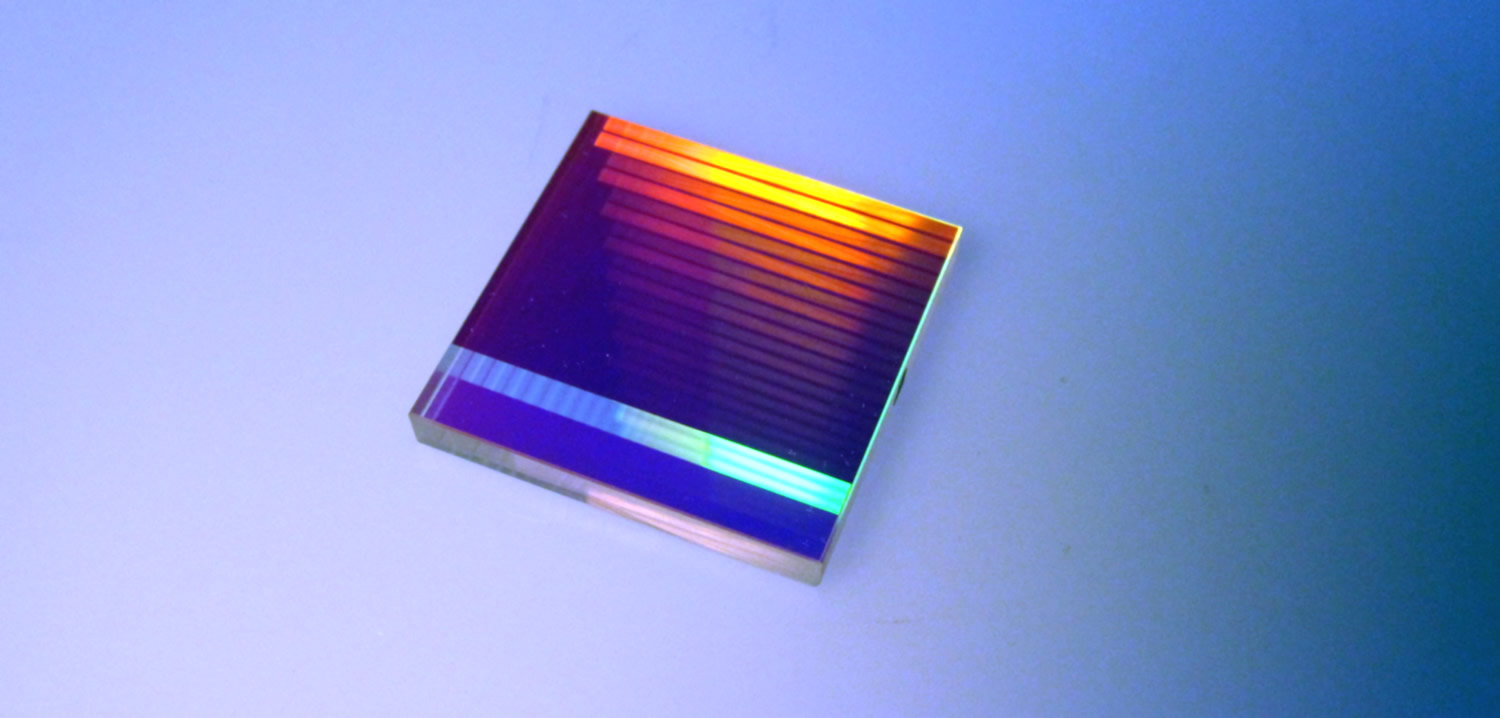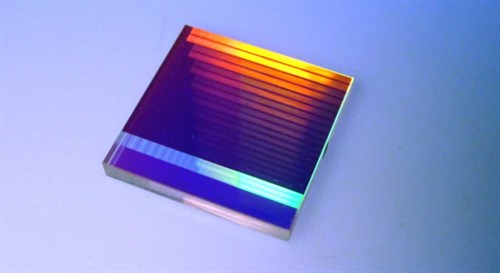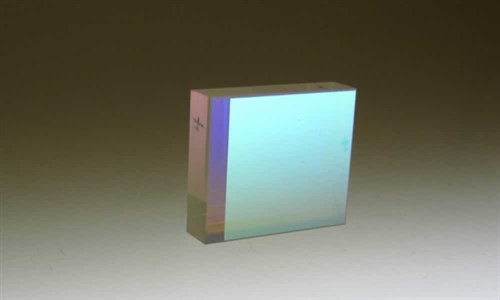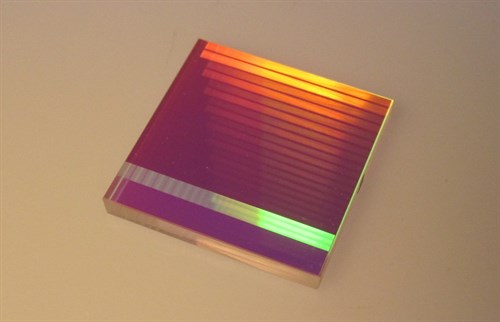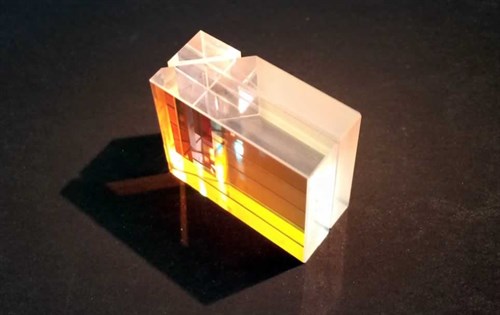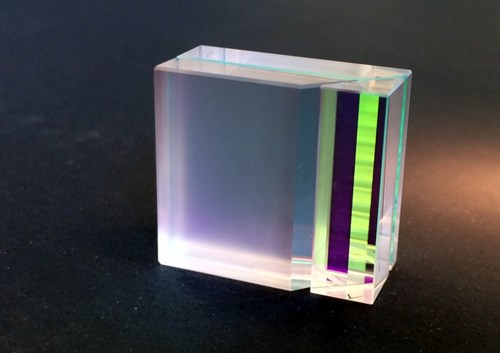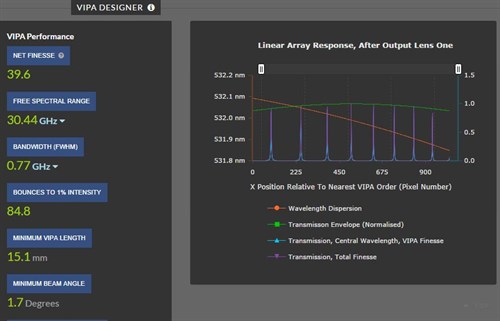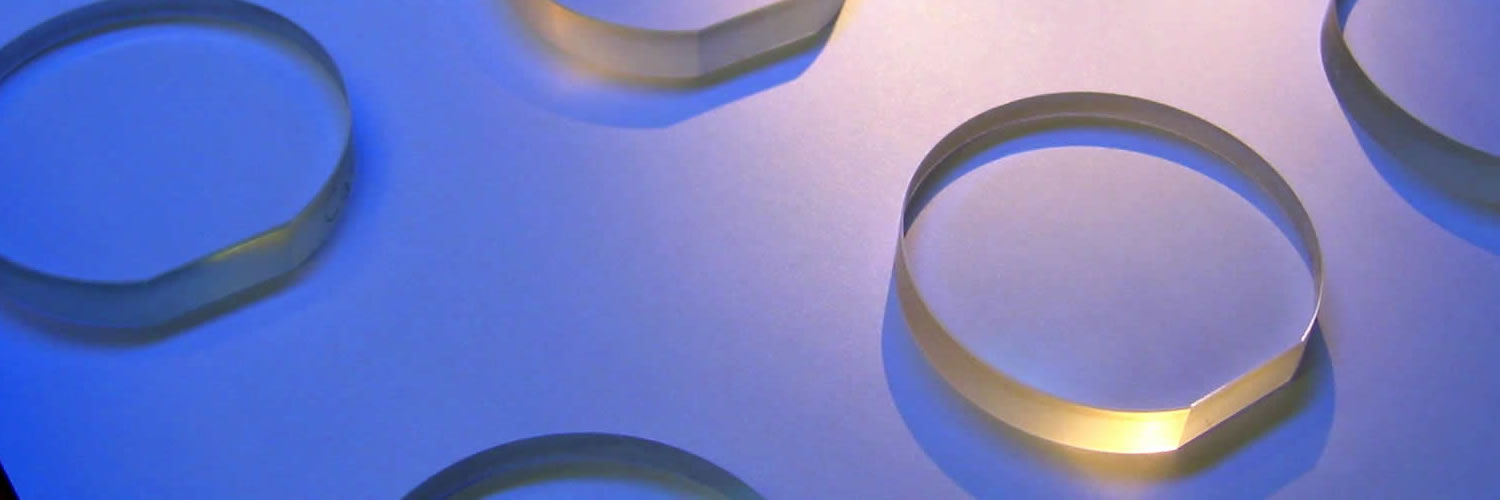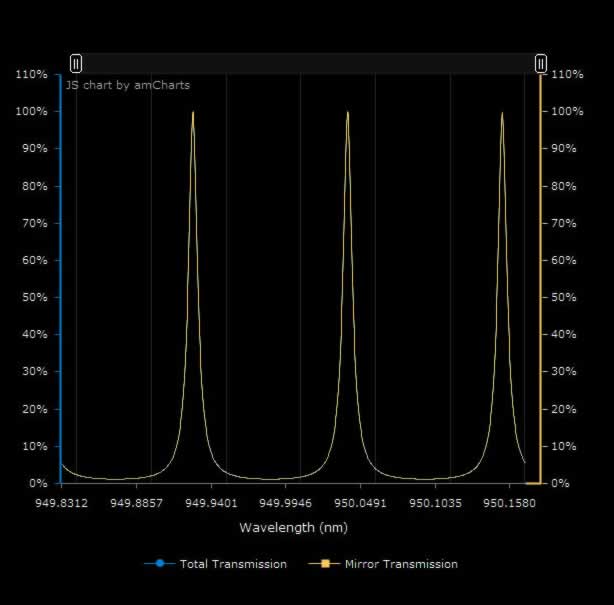LightMachinery’s VIPA (Virtually Imaged Phased Array) optics deliver extremely high angular dispersion, enabling compact systems with resolution far beyond conventional gratings. Built using our fluid-jet polishing and precision coating processes, VIPAs provide stable, repeatable performance for spectroscopy, laser diagnostics, and optical metrology.
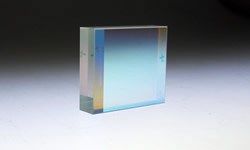
VIPAs are at the core of many of our spectrometers. A VIPA is a special type of Fabry–Perot etalon with three distinct coatings. One surface has an anti-reflection (AR) coated section adjacent to a high reflector; the opposite surface is coated with a partially transmitting mirror. Light is introduced at a small angle on the AR-coated area. The VIPA is tilted so the portion reflected from the partial reflector is fully incident on the high-reflectance zone of the input surface. Ready to design a VIPA? Try our online VIPA Designer.
How a VIPA works
A single input beam is converted to a series of parallel output beams of gradually decreasing intensity. These beams constructively interfere at an angle that depends on the wavelength. Placing a lens between the VIPA and an array detector (CCD or similar) records a spectrum of the input light. Each subsequent beam has a precise increase in phase and a fixed lateral displacement — hence “phase array”.
Key performance parameters
1) Optical thickness & FSR
For a solid etalon the optical path difference is OPD = 2 n t cos(θ), where n is the refractive index, t the thickness, and θ the internal angle from normal. From the optical thickness, the free spectral range is approximately FSR ≈ c / OPD. Analogous to a regular etalon, the angular dispersion of the VIPA output repeats whenever the input frequency (or wavelength) increases by one FSR.
2) Output mirror reflectance & finesse
Higher reflectance generally increases resolving power. We have optimized the partial reflectivity for each wavelength range to maximize finesse; finesse > 100 has been achieved for visible/NIR applications — i.e., it is possible to distinguish wavelengths separated by about 1/100 of the FSR.
3) Internal angle & transition width
Smaller internal angles increase angular dispersion, but practical limits apply. The first reflection from the partial reflector must be fully incident on the high reflector, so a narrower transition between the AR coating and the high reflector enables a smaller angle. Our VIPAs have a transition width of only 2–3 µm, enabling operation at very small angles — improving resolution and contrast compared to what was previously possible. The lateral offset of the reflected beam must also exceed the input beam width plus the coating transition width; this is typically optimized when the beam waist is located where the input first reflects from the partial reflector.
Materials & coatings
VIPA coatings must match the wavelength range of interest, and the substrate must be transparent. LightMachinery catalog VIPAs are made of fused silica. Customized designs using calcium fluoride or silicon allow operation further into the infrared.
Get specs & simulate
See our VIPA catalog page for details and pricing of standard VIPA etalons. Remember - we make custom VIPAs all the time, so you aren't limited to the catalog options. Try the online VIPA Designer to adjust VIPA parameters and simulate performance.
VIRTUALLY IMAGED PHASE ARRAYS - VIPAS
Examples of VIPAs from LightMachinery
Check out our Catalog and our Calculators!
Optics Catalog
Most of the optics we make are custom made but we still have an interesting catalog. Check it out!
Optical Design Center
Design etalons, lenses, resonators, VIPA's and explore optical material properties.

